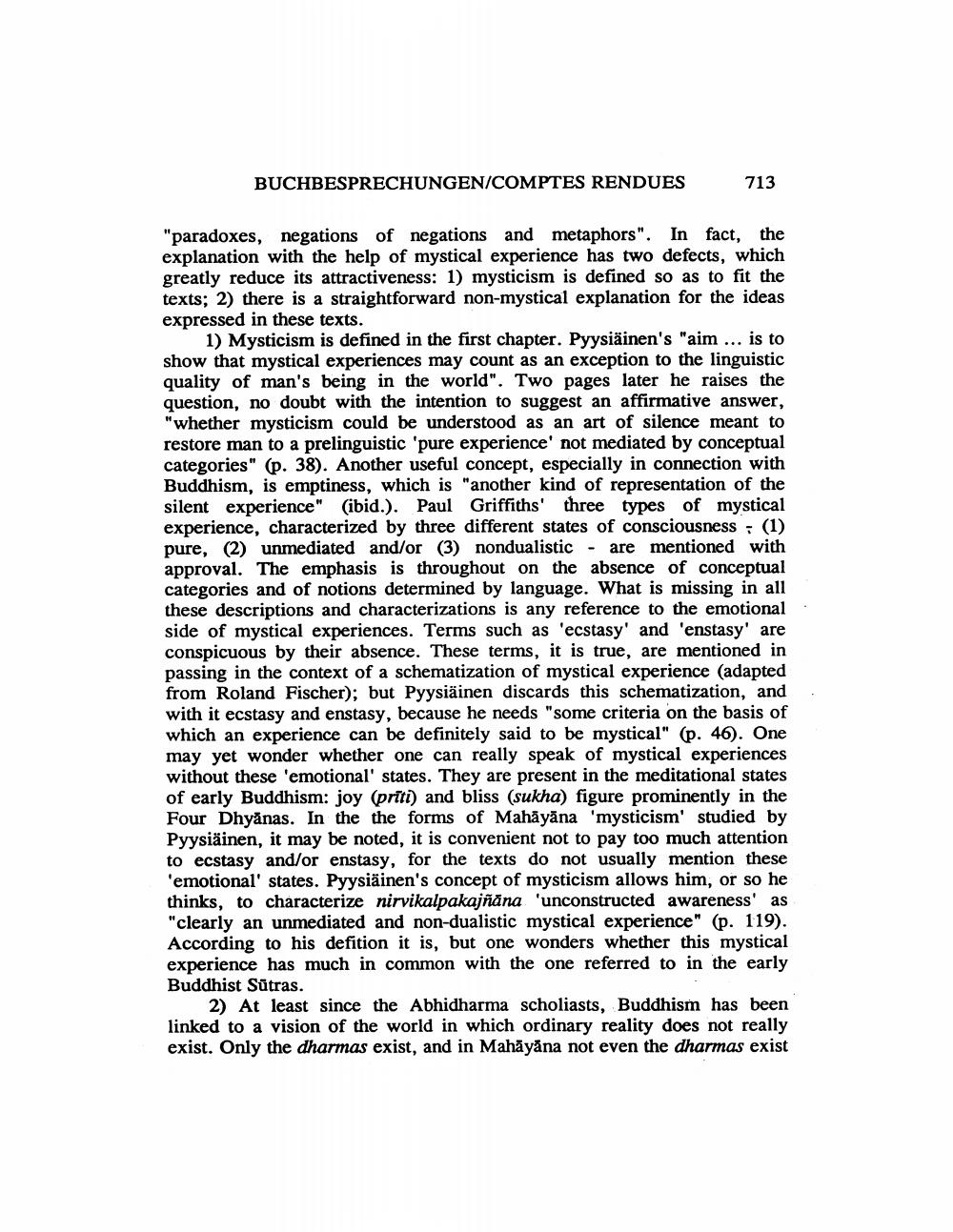Book Title: Buchbesprechungen Comptes Rendus Author(s): Johannes Bronkhorst Publisher: Johannes Bronkhorst View full book textPage 5
________________ BUCHBESPRECHUNGEN/COMPTES RENDUES 713 with in the woricount as an. Pyys "paradoxes, negations of negations and metaphors". In fact, the explanation with the help of mystical experience has two defects, which greatly reduce its attractiveness: 1) mysticism is defined so as to fit the texts; 2) there is a straightforward non-mystical explanation for the ideas expressed in these texts. 1) Mysticism is defined in the first chapter. Pyysiäinen's "aim ... is to show that mystical experiences may count as an exception to the linguistic quality of man's being in the world". Two pages later he raises the question, no doubt with the intention to suggest an affirmative answer. "whether mysticism could be understood as an art of silence meant to restore man to a prelinguistic 'pure experience' not mediated by conceptual categories" (p. 38). Another useful concept, especially in connection with Buddhism, is emptiness, which is "another kind of representation of the silent experience" (ibid.). Paul Griffiths' three types of mystical experience, characterized by three different states of consciousness - (1) pure, (2) unmediated and/or (3) nondualistic - are mentioned with approval. The emphasis is throughout on the absence of conceptual categories and of notions determined by language. What is missing in all these descriptions and characterizations is any reference to the emotional side of mystical experiences. Terms such as 'ecstasy' and 'enstasy' are conspicuous by their absence. These terms, it is true, are mentioned in passing in the context of a schematization of mystical experience (adapted from Roland Fischer); but Pyysiäinen discards this schematization, and with it ecstasy and enstasy, because he needs "some criteria on the basis of which an experience can be definitely said to be mystical" (p. 46). One may yet wonder whether one can really speak of mystical experiences without these 'emotional' states. They are present in the meditational states of early Buddhism: joy (prīti) and bliss (sukha) figure prominently in the Four Dhyanas. In the the forms of Mahāyāna 'mysticism' studied by Pyysiäinen, it may be noted, it is convenient not to pay too much attention to ecstasy and/or enstasy, for the texts do not usually mention these 'emotional' states. Pyysiäinen's concept of mysticism allows him, or so he thinks, to characterize nirvikalpakajñāna 'unconstructed awareness' as "clearly an unmediated and non-dualistic mystical experience" (p. 119). According to his defition it is, but one wonders whether this mystical experience has much in common with the one referred to in the early Buddhist Sūtras. 2) At least since the Abhidharma scholiasts, Buddhism has been linked to a vision of the world in which ordinary reality does not really exist. Only the dharmas exist, and in Mahāyāna not even the dharmas existPage Navigation
1 ... 3 4 5 6 7
